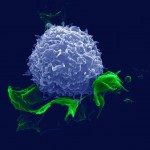Link to Pubmed [PMID] – 17073127
Rev Epidemiol Sante Publique 2006 Jul;54 Spec No 1:1S23-1S31
BACKGROUND: Factors that influence the risk for HCV infection after occupational exposure to hepatitis C virus (HCV) have not yet been determined. The objective of this study was to assess potential risk factors for Hepatitis C seroconversion after occupational exposure to HCV.
METHODS: We conducted a European matched case-control study from 01/01/1991 through 31/12/ 2002. Cases were Health Care Workers (HCWs) who were HCV seronegative at the time of exposure, sustained a documented exposure to HCV, and present documented HCV seroconversion temporally associated with the exposure. Controls-HCWs had a documented exposure to HCV, were HCV seronegative at the time of exposure, and remained so at least 6 months later. Controls were matched to cases for the center and the time period of the exposure occurrence.
RESULTS: 60 cases and 204 controls were included. All cases were exposed to HCV-infected materials through percutaneous injuries. Those for whom information was available (61.6%) were exposed to viremic source patients. Multivariate conditional logistic regression analysis, in which HCV viral load was not introduced because of missing values, identified needle placed in the source patient’s vein or artery (Odds Ratio [OR]=100.1; 95% Confidence Interval [CI]=7.3-1365.7), deep injury (OR=155.2; 95%CI=7.1-3417.2), and HCW’s gender (M vs. F: OR=3.1; 95%CI=1.0-10.0) as risk factors for HCV infection. In univariate unmatched analysis the risk of HCV transmission was increased 11-fold (C195%=1.1-114.1) in HCWs exposed to sources with a viral load>6 log10 copies/mL when compared to sources with a HCV viral load<4 log10 copies/mL.
CONCLUSION: The risk of HCV transmission after percutaneous exposure increases with a larger volume of blood, and, a higher titer of HCV in the source patient’s blood. The role of HCW’s gender need to be further investigated. The results of this study have important implications for counselling and follow-up of HCWs after exposure.

